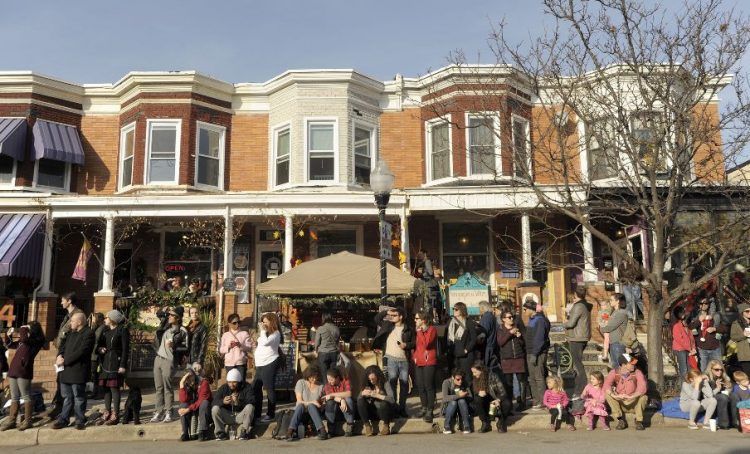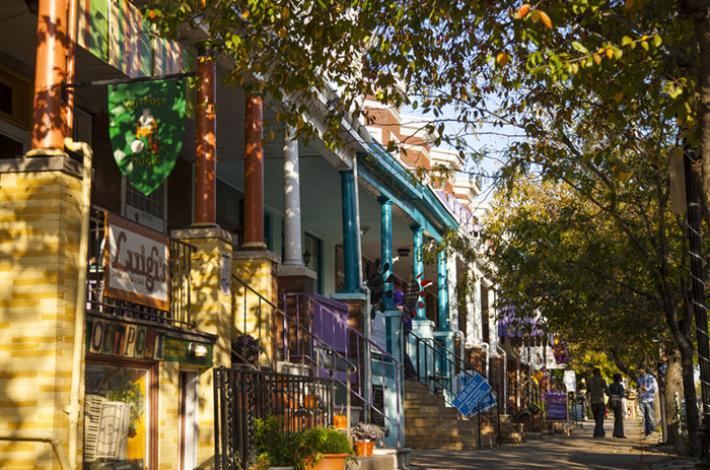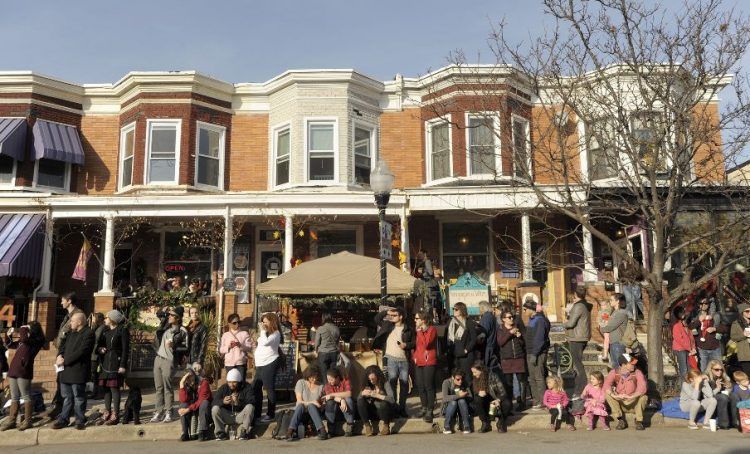
Hampden is a neighborhood that can be found in the north of Baltimore, MD. To its east is Wyman Park, while to its west is the Jones Falls Expressway. Furthermore, to its north is Roland Park, while to its south is Remington, which is another one of the city’s numerous neighborhoods. It is interesting because while it is one of the older neighborhoods that have become part of Baltimore over the course of its existence, it has seen something of a revival in recent times with the massive influx of both businesses and residents, thus making it the best of both the past and the present.
History of Hampden
When it came into existence, Hampden was not part of the city of Baltimore. Instead, it was meant to be a place to live for the people laboring in the mills that sprung up along the Jones Falls, which was a natural location for the kind of manufacturing facilities that could be found in the industrial era. It was not until 1889 when it became part of the city of Baltimore, where it became known as a white, working-class neighborhood. In part, this was because of its founding as a place to live for mill workers. However, it should also be noted that a lot of those mill workers came from Appalachia, which contributed much to not just its demographic makeup but also the culture of the neighborhood as a whole.
This history is something that can be seen in the makeup of the real estate properties that can be found in the neighborhood. For example, most of them consist of small row houses made out of brick and stone, which stand no more than a couple of stories and have a rather similar appearance with one another. This is because these real estate properties were the ones built to house the mill workers and their families. In contrast, there are also other real estate properties that are quite a bit bigger in size and built out of stone, which should come as no surprise because they were built for the use of managers as well as other higher-ranked employees at the mills. However, it is interesting to note that there are also other real estate properties that can be found in Hampden, which is rather noticeable because it is short on space for the construction of new homes and other buildings. This is something that has to do with what happened when it started seeing its revival.

Unsurprisingly, when the mills started closing their doors throughout the United States, the city of Baltimore was no exception to that rule. As a result, Hampden suffered a fair bit from the knock-on effects of those closures. After all, no mills meant no jobs for the mill workers, which in turn, meant that people would start leaving in order to seek their livelihoods in other places whenever and wherever possible. With their departure, the customer base for the local businesses saw a corresponding shrinkage, which in turn, meant that local businesses could no longer keep their revenue-earning operations running at the same pace. This meant more jobs being lost and more decreases in local spending, thus compounding the problem. Something that was not uncommon in working-class neighborhoods throughout the United States at one point in time.
The Comeback
However, it is important to note that Hampden made a comeback. In the early 1990s, artists and other interested individuals began moving into the neighborhood, which was a process that was helped along by the real estate prices that had been brought low by the long slump. As people began living in the neighborhood again, this led to more development, thus resulting in real estate properties springing up along its boundaries as well as apartment buildings going up in select locations within them. Naturally, the increased availability of living space brought in more and more people, which at the same time, also convinced more and more businesses to open their doors either in the neighborhood or close to it. In other words, the slump that had once overtaken Hampden was overcome by a reversal of the process.
With that said, there is more to the story of Hampden’s revival than a simple matter of real estate economics. After all, artists tend to be rather creative as well as rather energetic people, so it should come as no surprise to learn that their flocking to the neighborhood resulted in the creation of new cultural events as well as the inclusion of its old working-class culture through celebrations such as the HonFest. With these cultural events, Hampden was no longer just booming but also a trendy place to live, work, and play, thus making it even more popular than it would have been without its artistic communities.

Future looks bright
Now, Hampden is one of the most up-and-coming neighborhoods that can be found in not just the city of Baltimore but also the whole of the United States. This is a statement supported by the fact that so many people wanted to call it home that its real estate prices actually rose the most out of any neighborhood in Baltimore in 2013, which was something helped along by the fact that it had so little extra space for further development.
However, what makes Hampden clearly a place that is still booming at the moment can be seen in the fact that retailers, restaurants, and other businesses are still springing up to cater to the needs and interests of a burgeoning population, with one excellent example being a high-end movie theater that opened up as recently as 2015. Combined with the increasing ease of access to the neighborhood with the addition of new public transportation routes, it seems probable that these new developments will keep the good times going for Hampden for the foreseeable future, meaning that it is home to much of interest to those who seek out dynamic places to live.


Comments
Loading…